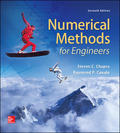
Concept explainers
The differential equation for the velocity of a bungee jumper is different depending on whether the jumper has fallen to a distance where the cord is fully extended and begins to stretch. Thus, if the distance fallen is less than the cord length, the jumper is only subject to gravitational and drag forces. Once the cord begins to stretch, the spring and dampening forces of the cord must also be included. These two conditions can be expressed by the following equations:
where
Want to see the full answer?
Check out a sample textbook solution
Chapter 28 Solutions
EBK NUMERICAL METHODS FOR ENGINEERS
- Consider the weighted voting system [11: 7, 4, 1]Find the Shapley-Shubik power distribution of this weighted voting system.List the power for each player as a fraction: P1: P2: P3:arrow_forwardConsider the weighted voting system [18: 15, 8, 3, 1]Find the Banzhaf power distribution of this weighted voting system.List the power for each player as a fraction: P1: P2: P3: P4:arrow_forwardConsider the weighted voting system [18: 15, 8, 3, 1]Find the Banzhaf power distribution of this weighted voting system.List the power for each player as a fraction: P1 = P2 = P3 = P4 =arrow_forward
- Consider the weighted voting system [18: 15, 8, 3, 1]Find the Banzhaf power distribution of this weighted voting system.List the power for each player as a fraction: P1: P2: P3: P4:arrow_forwardConsider the weighted voting system [18: 15, 8, 3, 1]Find the Banzhaf power distribution of this weighted voting system.List the power for each player as a fraction: P1: P2: P3: P4:arrow_forwardFind the Banzhaf power distribution of the weighted voting system[26: 19, 15, 11, 6]Give each player's power as a fraction or decimal value P1 = P2 = P3 = P4 =arrow_forward
- solve it using augmented matrix. Also it is homeworkarrow_forward4. Now we'll look at a nonhomogeneous example. The general form for these is y' + p(x)y = f(x). For this problem, we will find solutions of the equation +2xy= xe (a) Identify p(x) and f(x) in the equation above. p(x) = f(x) = (b) The complementary equation is y' + p(x)y = 0. Write the complementary equation. (c) Find a solution for the complementary equation. We'll call this solution y₁. (You only need one particular solution, so you can let k = 0 here.) Y1 = (d) Check that y₁ satisfies the complementary equation, in other words, that y₁+ p(x)y₁ = 0.arrow_forwarddata managementarrow_forward
 Algebra: Structure And Method, Book 1AlgebraISBN:9780395977224Author:Richard G. Brown, Mary P. Dolciani, Robert H. Sorgenfrey, William L. ColePublisher:McDougal Littell
Algebra: Structure And Method, Book 1AlgebraISBN:9780395977224Author:Richard G. Brown, Mary P. Dolciani, Robert H. Sorgenfrey, William L. ColePublisher:McDougal Littell
 College Algebra (MindTap Course List)AlgebraISBN:9781305652231Author:R. David Gustafson, Jeff HughesPublisher:Cengage Learning
College Algebra (MindTap Course List)AlgebraISBN:9781305652231Author:R. David Gustafson, Jeff HughesPublisher:Cengage Learning Trigonometry (MindTap Course List)TrigonometryISBN:9781337278461Author:Ron LarsonPublisher:Cengage Learning
Trigonometry (MindTap Course List)TrigonometryISBN:9781337278461Author:Ron LarsonPublisher:Cengage Learning



